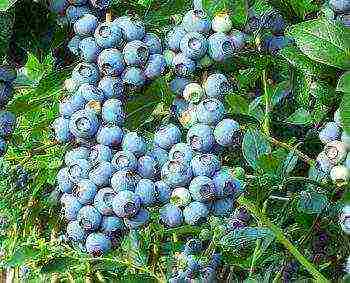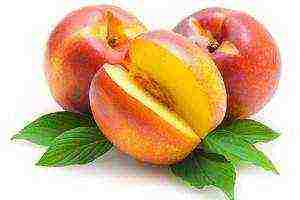Content
- 1 The best varieties of peas for open ground
- 2 Sowing peas: types
- 3 Shell peas
- 4 Marrowfat pea
- 5 Alpha
- 6 Atlant
- 7 Viola
- 8 Emerald
- 9 Premium
- 10 Tropar
- 11 The best varieties of brain peas
- 12 The best sugar varieties
- 13 Which variety to choose when planting?
- 14 How to grow peas?
- 15 Sowing peas: characteristics of plants
- 16 Correct sowing of seeds
- 17 Description of pea varieties

Often novice gardeners ask which pea varieties are the best. Everyone wants to grow fruitful, tasty, sweet peas.
Peas differ not only in taste, but also in plant height and ripening times. So, if you plant several varieties of peas with different ripening periods in early spring, then you can feast on this delicious vegetable for as much as two to three months. The main thing is to choose the right varieties.
Sugar peas are delicious and can be eaten with the shutters, as coarse fibers do not form in them. Brain peas (shelling) are also very tasty, but they are mainly used for freezing and canning. Shell peas also have smooth-grain varieties, we usually buy them in the store by weight, for making soup and cereals.
Consider the best varieties of green peas, which are such according to numerous reviews of gardeners. These varieties have both taste and yield at the proper height.
Pea varieties: photo, description, reviews
Currently, 79 varieties of peas are included in the State Register of Breeding Achievements of the Russian Federation, admitted for use.
Peas Alpha
Early maturing (the period from full sprouting to ripeness is 46-53 days), a fruitful variety of peas. This variety is characterized by a friendly return of the harvest.
Plant 50-55 cm high. Pods are dark green, slightly curved with a pointed tip, 7-9 cm long. Each pod contains dark green, even in color and size, sweet peas with excellent taste.
These green peas are great for fresh consumption, home cooking, canning and freezing.
Alpha pea yield: up to 2.8 kg / m² of pods.
Seeds are planted in rows, every 5 - 6 cm, with row spacing of 15 - 20 cm.
Shell peas Alpha recommended for cultivation in the Altai Territory, Kamchatka Region, in the Non-Black Earth Zone, the Central Black Earth Region, in the North Caucasus zone, in the Ukraine, in Belarus, and in Moldova.
Peas Ambrosia
An early ripening variety of sugar peas. From germination to technical ripeness of beans, it takes 54-56 days.
Plant height 60-70 cm, so supports or trellises are required. In the early stages, peas are used for food along with the valves.
The pods are light green, up to 10 cm long, contains 8-9 grains, there is no parchment layer in the valves. The peas themselves are fleshy, tender, juicy. These green peas are good for fresh consumption, freezing and canning.
Productivity of ragweed peas: 0.9 - 1.3 kg.
Agrotechnics of peas: sowing in open ground at the end of April - beginning of May to a depth of 3-4 cm according to the scheme of 30 x 15 cm.
Peas Vera
An early variety of hulling peas for fresh use and processing (50 days pass from the moment of germination to technical ripeness).
Bred by VNIISSOK, zoned for the North Caucasian and Middle Volga regions.Plant height 55-65 cm, pods are straight or slightly curved, 6-9 cm long, with 6-9 peas and a strong parchment layer. The flowers are white.
Productivity of Vera peas: 0.7-1.2 kg per 1 sq. m.
Advantages of the variety: good yield, amicable ripening, resistance to damage by the moth.
Pea Zhegalova 112
A mid-season high-yielding variety of sugar peas, 50-60 days pass from germination to technical ripeness. The Zhegalova 112 variety was bred at the Gribovskaya vegetable selection station.
Plant height 120-180 cm, needs support. The pods are straight or slightly curved, 10-15 cm long, with a blunt apex, with 5-7 peas. The pea blades are thick, fleshy, nutritious and delicious.
The pod harvest period lasts 15-20 days. The taste of green peas is very delicate and sweet.
Productivity of peas Zhegalov 112 - up to 1.2 kg from 1 sq. m.
Pea seeds from Gavrish.
Peas Sugar Oregon
A mid-early variety of sugar peas, 55 days pass from germination to ripeness.
Plant height 70-100 cm, supports required. The pods are 10 cm long, with 5-7 smooth peas, wide, without a hard parchment layer.
Not only peas are used for food, but also the shoulder blades themselves. The variety is suitable for canning.
Seed producer: Plasma Seeds firm.
Pea Oscar
Mid-season (65 - 70 days from germination to ripening) sugar pea variety. An analogue of the Tristar variety, but with an earlier ripening period, more tender and sweet peas.
The plant is 70-80 cm high. The first inflorescence is formed above 7-8 leaves, with 2-3 blades in each. The peas are large, with a diameter of 8 to 10 mm. The pods are curved with a sharp top, medium length, wide, green. Each pod contains 10-12 peas. In the early stages of development, the parchment layer is absent.
These peas are used fresh, for freezing and canning.
The variety is highly resistant to disease.
Sowing peas in open ground at the end of April - beginning of May to a depth of 3-4 cm (if you sow smaller, birds can peck out the grains) according to the scheme 30 x 15 cm.
Oscar pea yield: 0.5 - 0.9 kg from 1 sq.m.
Children's sugar peas
An early ripe high-yielding sugar variety of peas.
Plant with a height of about 80 cm, can be grown without supports. Pods are light green, slightly curved, 10-11 cm long, wide, without parchment layer.
Children's sugar pea variety is used for fresh consumption, canning and freezing.
Peas yield Baby sugar - up to 1.5 kg from 1 sq. m.
Seed producer: Aelita firm.
Peas Moscow delicacy
A mid-season variety of green peas, is rightfully considered the sweetest. The delicious, delicious taste of this high-yielding early variety will be a revelation for you.
Peas Moscow delicacy is suitable for fresh consumption, as well as for canning and freezing.
Pea seeds Moscow delicacy is produced by the company “Russian garden”.
Peas Miracle of Kelvedon
An early ripe high-yielding sugar variety, 60-75 days pass from germination to ripeness.
The plant is slightly branched, 45-55 cm high. The pods are 6-8 cm long, with 7-8 large, dark green sweet peas.
Advantages of the variety: cold resistance, lodging resistance, high taste and dietary qualities, increased protein content.
Pea yield Miracle of Kelvedon: 0.8 - 1.2 kg from 1 sq.m.
Agrotechnology: to obtain a harvest of peas throughout the summer, seeds are sown in 2-3 terms with an interval of 10-15 days. The Kelvedon Miracle pea variety is suitable for fresh consumption, as well as for canning and freezing.
Pea slider sugar
An early ripening variety of leafless peas (period from germination to technical ripeness of 53-55 days), characterized by one of the longest fruiting periods among the early varieties.
The plant is 70-75 cm high, grown unsupported and does not lie down. The pods are light green, slightly curved, narrow and long (up to 10 cm).Each pod contains 8-9 sweet and tasty peas.
These green peas are great for fresh use, canning and freezing.
Advantages of the variety: long fruiting period, does not require supports, early maturity.
We recommend purchasing high-quality peas for planting in the Sady Rossii online store.
What kind of peas do you plant? Which peas are the sweetest? And the most productive?
Your reviews and additions will help many gardeners choose the sweetest, most fruitful, delicious, delicate varieties of peas for planting. If possible, attach a photo of the peas you have grown.
Do not forget to indicate your city or region, so we will help readers choose pea varieties, for example, for the Moscow region, the north-west, for the Urals and Siberia, the Leningrad region, for the northern regions and the middle zone. That is, separately for each climatic zone. Thanks for the feedback!
Both adults and children love to eat green peas. Practically in every vegetable garden there is a place for vegetable legumes, moreover, agricultural technology does not include complex measures. An important component of a good harvest is the selection of a variety and high-quality pea seeds. With the current assortment of seed, making a choice is not so easy, a description of the different varieties will help you with this.
The best varieties of peas for open ground
In this article, you can familiarize yourself with the most popular varieties, the yield and quality of the fruits of which have been tested for years.
Peas Alpha
The ripening period of the Alpha variety is early, from the moment of germination of shoots above the soil surface to technical ripeness, 45-55 days pass. The variety has a stable yield (6-7 t / ha), resistance to fusarium, ascochitosis and other diseases.
The height of the bush in centimeters reaches 55, 2 beans are formed in each bosom, 5-9 seeds develop in a pod 7-9 in length.
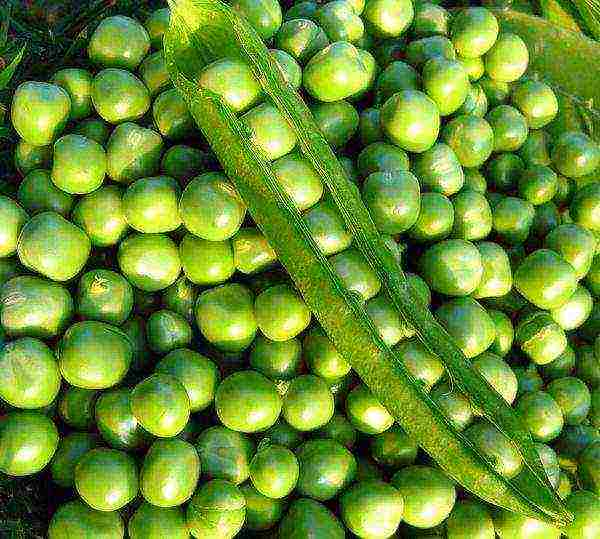 Pea variety Alpha
Pea variety Alpha
The peculiarity of the culture lies in the high market value and taste due to the high sugar content in the composition.
When sowing, the scheme is used: row spacing - 20, the interval between seeds - 5, the depth of immersion of the peas - 3-4.
Sugar grade
Early ripening peas with a growing season of 55-60 days. The height of the bush reaches 50-70 cm, and therefore requires a garter. Pod parameters at the stage of technical ripeness: length - 7-8 cm, number of seeds - 5-9 pieces. The culture is resistant to ascochitosis and powdery mildew.
With proper fertilization of the soil at the stage of preparation for sowing, no further fertilizing is needed. Features of the fruit - very sweet taste, ideal for canning. Yield indicators: 7-8 t / ha.
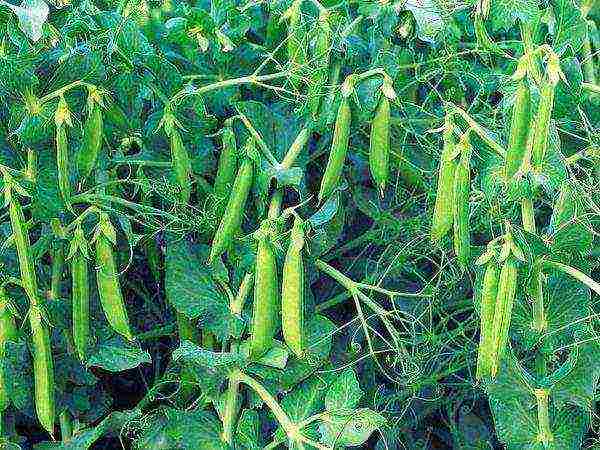 sugar peas
sugar peas
Ambrosia
A high-yielding variety with a maturation period of 45-56 days. The bush is formed to a height of 70 cm, so a garter or installation of trellises is required. In the axil of the plant, 2 beans each develop. At the stage of technical ripeness, the pod length reaches 8-10 cm, each contains 6-8 seeds... Disease resistance is average, tolerance to Fusarium is noted.
Sowing work is carried out in May, and in June it is time to harvest (up to 1.3 kg per 1 m2). When planting, the scheme is used: 30x15, the immersion depth of the peas is up to 5-6 cm.
Regular application of mineral fertilizers prolongs the fruiting period, which increases the yield.
faith
A super early pea variety with a growing season of 50 days. The bush is formed of medium size, reaching a height of half a meter. Straight or slightly curved pods contain 6-9 peas. Amicable germination of crops is replaced by no less amicable fruiting.
Intensive maturation requires additional nutrients that need to be added as top dressing every 10 days. Harvest up to 500 grams per square meter. When disembarking, the scheme is used: 15x5, immersion depth - 4-6. The beans are used fresh, for freezing and canning.
Oscar
A high-yielding early-ripening variety with a growing season of 65-69 days. Bushes are formed high, reaching 80 cm, so trellis should be installed along the bed or tie to individual pegs. The pod is large, dark green in color, up to 9 cm long, contains 10-12 seeds. Average disease resistance, the plant is tolerant to fusarium wilt... Yield indicators: 7 t / ha.
When planting, the scheme is used: 20x6 cm.If high-quality soil fertilization was carried out before sowing, then top dressing can be omitted.
Baby sugar
An unpretentious high-yielding variety with a growing season of 60-70 days. A strong stem is formed up to 80 cm in height, which provides for the procedure of tying or installing a trellis. On one bush, an average of 14 pods are tied, each reaching 5-8 cm in length, the number of peas is 6-9 pieces.
The peculiarity of the plant is the absence of a parchment layer, which allows the fruit to be consumed fresh without extracting from the pods.
Also, the beans are suitable for freezing and canning.
The culture has an average resistance to diseases, withstands night spring frosts, therefore it is suitable for growing in Siberia. The agricultural technology is very simple, there are no special conditions for watering and feeding.
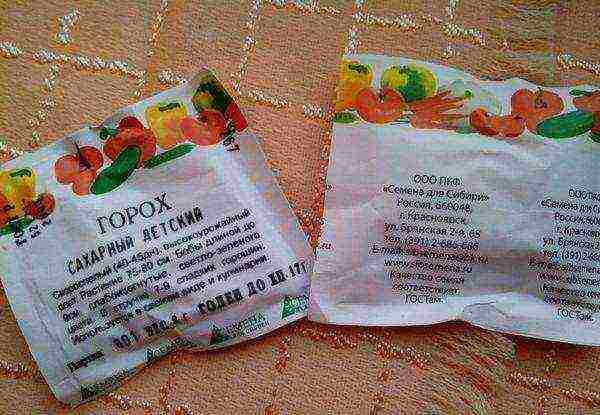 Pea seeds baby sugar
Pea seeds baby sugar
Sugar Oregon
A medium-early ripening culture with a vegetation period of 55-70 days. Peas are considered one of the best for growing in the Moscow region. The height of the bush sometimes exceeds the 1 m mark, so trellises must be installed along the beds. The average length of the beans is 7-9 cm, each containing about 7 peas with a smooth surface. The peculiarity of Sugar Oregon is the thickness of the parchment layer, it is so thin that it can be eaten with the pod.
When disembarking, use the scheme: 30x15. Young shoots develop intensively in fertile soil rich in calcium (the medium should be neutral or slightly acidic). Aeration also affects the yield, so it is carried out regularly.
Pharaoh
The culture is mid-season with a growing season of 68-85 days. The peculiarity lies in the high yield, about 18, 9 centners are removed from one hectare. The plant has good immunity, easily tolerates drought. Tolerance to root rot and ascochitosis is noted. The number of nodes up to the first inflorescence is 11-15, 3 flowers are formed on each.
Salute
Ripening period - early, growing season lasts days. The bushes have a powerful stem, therefore, at a height of 65-80 cm, a garter is not a must. Ripe pods reach a length of 8-9 cm, each containing 7-8 peas. Brain variety is distinguished by high commercial characteristics and taste.
Troika
Late ripening plant with a vegetation period of 78-96 days. The bushes are of medium length, so a garter must be made.
Small peas in a bean are formed by small, 6-7 pieces, but very sweet, for which they are appreciated by farmers and cooks.
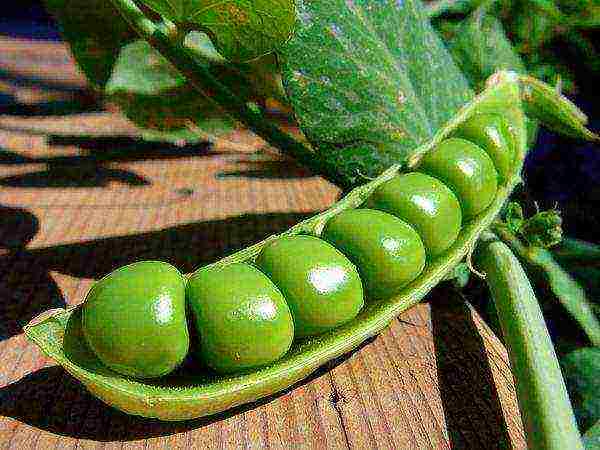 Peas Three
Peas Three
Yield indicators - 5 t / ha. The top three belongs to the brain varieties, the taste, as well as the marketable ones, are at their best.
Even a novice gardener can cope with growing peas in the open field. As a reward for the time and effort spent, you can get a nutritious and vitamin-rich product that will complement the delicate taste of many dishes.
Choosing a good seed pea is not easy at all. There are a lot of varieties now. Each has not only its own advantages, but also disadvantages. Brain, hulling and sugar varieties are registered and grown on the territory of the country. They all have different yields, pest and weather resistance.
Sowing peas: types
As we said, there are three main varieties of seed peas: sugar, cereal, and hull peas. Each of them is represented by a variety of varieties that differ in taste characteristics, nuances of cultivation.Let's talk about this in more detail.
Shell peas
Shelling peas are the most popular sowing peas. It is in great demand in farms that cultivate this crop for further sale as grain or seed.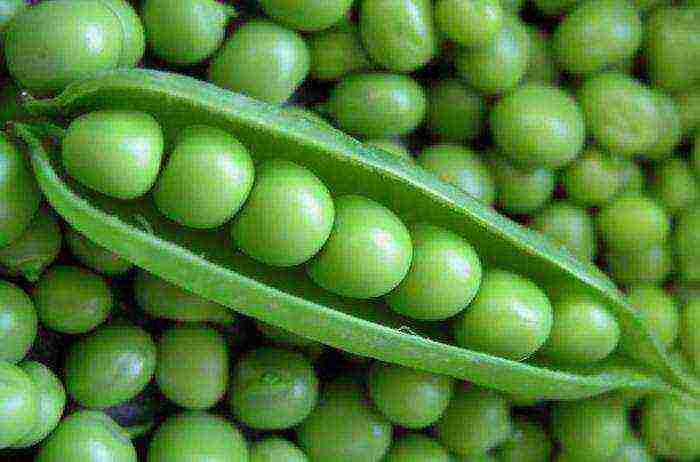
It has a very smooth and round shape and can be easily divided into two halves. This quality is very valuable, as it facilitates the further process of grinding and processing on peeling machines.
Sowing peas are used as animal feed. Pea groats and peels, which have a huge amount of vitamins and high calorie content, are of particular value. In addition, peas are used in the food industry and to obtain starch, which the plant is rich in, but at the same time does not contain sugar. However, for sowing in summer cottages and personal plots, shell peas are not suitable. The description of this species suggests that its taste characteristics in green form are an order of magnitude worse than other varieties. And it is difficult to realize it in small quantities.
Marrowfat pea
Brain peas are a very popular plant and are often grown at home to produce delicious beans. When ripe, the seeds have a shriveled appearance. Because of this fact, the sowing pea got its name. However, it is brought to a ripe state only at seed-growing stations. It is consumed by gardeners in a green state. Its peas are sweet, large and early ripening. As a rule, cereal peas are used for preservation and for fresh food.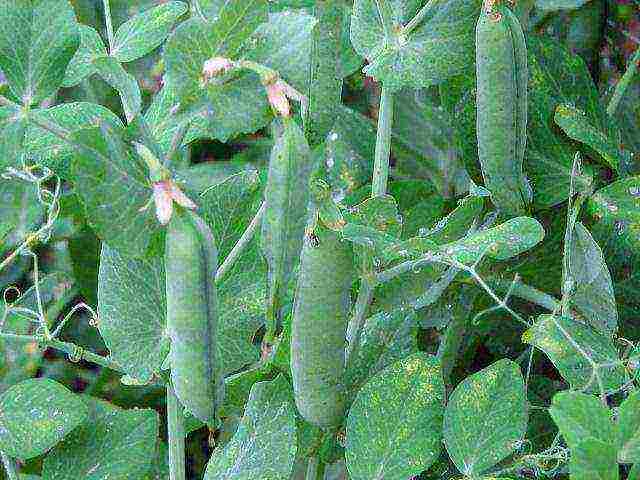
Absolutely all varieties of this representative of legumes have been remarkably acclimatized in our country. Therefore, the choice of variety will directly depend on the purpose of growing. Let's talk about the most popular varieties.
Alpha
Sowing peas Alfa is an early hulling variety. With good watering, the yield can be up to forty-five centners per hectare. Peas ripen in 85-110 days. In length, the pod grows up to 7 centimeters, the grains are large and round. The stems are up to 15 centimeters in height, in fact, this is a small dwarf plant.
Atlant
Atlant is a fairly good variety with a yield of up to 55 centners per hectare. The bushes of the plant are quite tall, the pod reaches 14 centimeters in length. This variety is very sweet. The seed variety Atlant is one of the few species that is perfect for conservation and for grain.
Viola
The Viola variety on the territory of Russia is considered the best of the mid-season, since it has a fairly high yield, is resistant to many diseases and, at the same time, is practically not afraid of drought. Sowing peas ripen in 70 days after the appearance of the first shoots. Plants grow up to 75 centimeters in height. One bush can have from 15 to 20 pods. The amount of sugar reaches 7 percent.
Emerald
But Emerald is an early ripening variety, its yield is slightly lower in our climatic zone, but it is very sweet in a green state. Seeds of sowing pea are large, irregular in shape, and therefore it is grown by farms.
Premium
A variety such as Premium will allow you to harvest the maximum yield. The fact is that up to 50 fruits are tied on one bush. With good care, this is not even a record. Plant height does not exceed 80 centimeters. Bushes grow quite voluminous, large and lush.
Tropar
This variety from the Caucasian selection has been grown for a couple of years in the territory of the Russian Federation and the countries of the Near Abroad. It is good in that it does not require strong care during the growth process. However, it has an average yield. Plants are not affected by pests. The variety is popular due to its unpretentiousness.
The best varieties of brain peas
The best brain varieties include:
- Belladonna is a late frost-resistant variety and can therefore be planted in February, when the first warmth comes. With good care, it can give large yields.The peas are round in color, sweet and tasty.
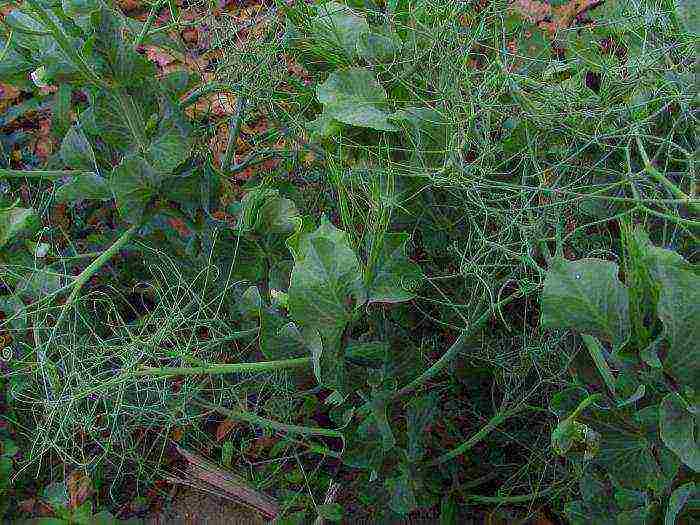
- The debut grows well in rather hot regions, where drought is possible in spring. However, this variety has a low yield. The advantages of this species include its resistance to pests.
- Calvedon is one of the best varieties available in supermarkets. It is used for industrial imports because it is quite sweet. Plants are resistant to powdery mildew.
- Honey cake is a unique variety. Contains the largest amount of sugar of all known types of green peas. However, experienced gardeners will be disappointed with its yield, it is very low. Therefore, it is grown only by amateur gardeners exclusively for personal needs.
- The sweet giant is a pea with a growing season of only 60 days. The beans are large, but the plant is extremely whimsical to weather conditions, requires constant watering and does not like heat. The yield of the variety is average.
The best sugar varieties
-
Zhegalova 112 is a hybrid form bred in Russia. It is very popular among summer residents, because not only the beans themselves are sweet, but also the "clothes". On average, up to 50 pods are laid on each bush, a lot depends on watering. The variety is resistant to pests, but needs to be treated with chemicals.
- Inexhaustible is a drought tolerant variety that has large pods. The shutters are also very sweet and are used in food. One pod contains up to 9 seeds.
- Hilum is a sweet hybrid (up to 12 percent sugar), perfectly acclimatized on the territory of Russia. This is a fairly productive variety with good watering.
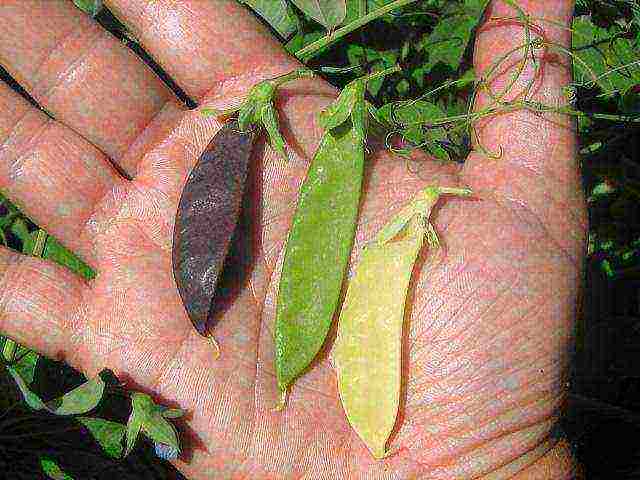
- Sugar 2 is a late sweet variety with excellent taste characteristics. The beans are firm and sweet, good for vegetable and fruit salads.
- The firstborn has very large bushes (up to 120 centimeters in height, and sometimes more), from which it is easy and convenient to harvest. Plants are unpretentious to drought, withstand frost, but need to be treated with chemicals.
Which variety to choose when planting?
If you first decided to plant peas on your garden plot, then you need to approach the choice of the variety wisely. You need to understand that yield is not at all the main indicator. It all depends on care, watering and timely pest control.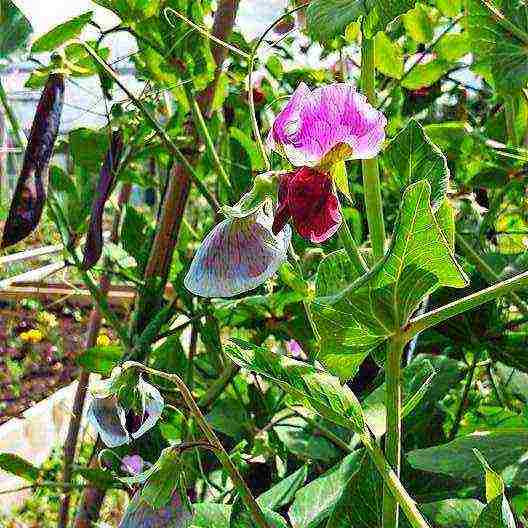
When choosing a variety, consider in which region you live, what are the weather conditions in your area. In addition, it is best to take seeds from plants that are adapted to your climate. As a rule, overseas seeds do not perform well in other people's conditions. You need to purchase proven varieties that have been sown in your area for several years and have managed to recommend themselves from the best side. After all, not all plants feel equally well in different regions.
How to grow peas?
Peas are cold-resistant crops, and therefore sowing can be started in early spring. This crop can be grown after any vegetables. The only condition is a large amount of humus. But peas are not picky about nitrogen.
On the roots of plants, as well as on many other legumes, nodule bacteria develop and live, which are able to assimilate atmospheric nitrogen. If you are on some site for the first time, then during sowing, together with the seeds, you can add a special preparation "Nitragin". It will help plants develop well initially without nitrogen starvation. It is good to add rotted compost or humus, nitrogen and phosphorus-potassium fertilizers under the peas.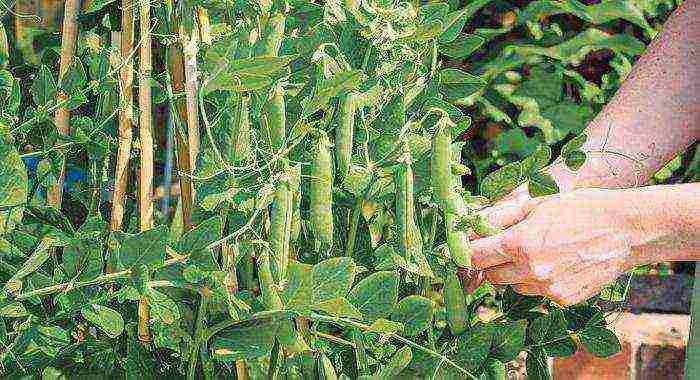
It makes sense to fertilize the soil well for peas. The cultivated areas, prepared and processed in advance, give excellent yields, and the beans themselves have a sweeter and more delicate taste.
Sowing peas: characteristics of plants
It should be noted that peas are an annual plant, cold-resistant, with a short growing season. And therefore, he pleases with fruits even in the northern regions. Under favorable conditions, the root system reaches one meter, but most of the highly branching roots are near the surface.The stems of the plant branch little, reaching from 50 centimeters to several meters in length. They are completely hollow inside. The tendrils of the seed pea help to climb up. In the presence of supports or mesh, the whips twist high enough, clinging to each other.
Flowers appear in the leaf axils. Sowing peas, the leaves of which consist of four small parts, ends with tendrils. However, some varieties do not have a leaf part at all, only one antennae, and others - on the contrary. At the base of the small leaves there are so-called stipules, which are much larger than the leafy part itself. Such is the unusual appearance of the sowing peas. The flower of the plant is quite typical for the legume representatives. Outwardly, it resembles a moth. Flowers can be single, but, as a rule, are collected in inflorescences. Each has 5 petals. The most common color is white. But there are pink, purple, purple.
An interesting fact is that pollination of the flower occurs when it is still closed. The proportion of cross-pollination is only one percent. So that the harvest does not depend on insects. In addition, this property allows you to preserve pure varieties, since the option of cross-pollination is practically excluded.
Correct sowing of seeds
Before planting, seeds must be soaked in a solution of water with micronutrient fertilizers. Sow them in rows, the distance between which is 45 centimeters. Plants should be 20 centimeters apart from each other. Seeds are sown to a depth of up to 3 centimeters in light soil, and in heavy soil, they can be laid in smaller grooves, but then the ground must be tied with straws from above or covered with small twigs.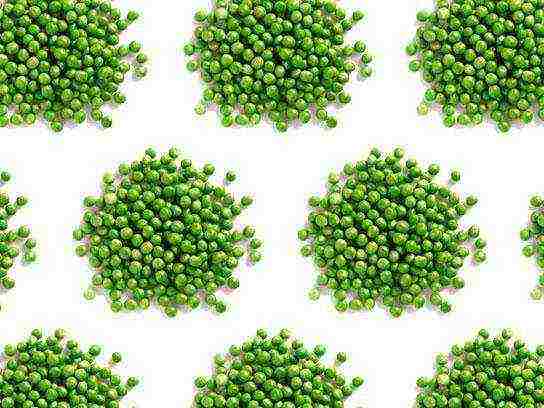
The first shoots appear in a couple of weeks. Sugar varieties grow rather slowly at first, so they will be clogged with grass. During this period, the plants need weeding.
A little later, you need to put the trellises at a distance of half a meter. The plants will trail up and hold on tightly to the net, this will prevent the wind from sprouting, and it will be easier for you to harvest. And the greens of the peas look very good on the site.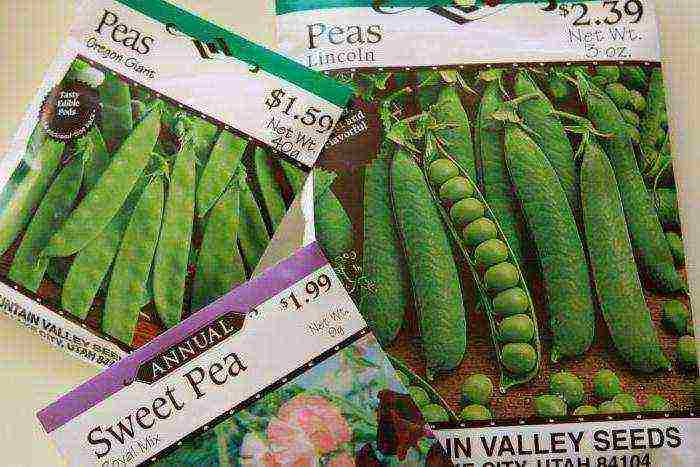
As for leaving, it comes down to watering and weeding. Plants begin to bear fruit, depending on the variety, this period, with careful care, stretches up to 35-40 days.
We hope that our article will be useful to you when choosing a variety of peas for home cultivation in personal plots, as well as tips for planting seeds. We wish you good luck and good harvests.
Peas are an extremely popular vegetable crop known to people for a long time. A large number of varieties of this plant have been bred - they have not only different ripening periods, but also different purposes.
Description of pea varieties
Pea varieties
All varieties of peas can be divided into canning peas, table peas and universal peas. The former have a delicate texture and sweet taste - they can be eaten fresh and canned. The most successful varieties of this group:
• Premium
• Viola
• Favorite
• Sugar-2
• Rocket
• Horn
Table varieties are ideal for drying and cooking, but when canned, they are not very tasty (peas remain tough, they do not differ in increased sweetness). Representatives of this group are varieties:
• Sunrise
• Jof
• Alexandra
Universal peas can be eaten fresh. They are also good in the form of canned food. The seeds are dried and frozen. Representatives of this group:
• Three
• Vega
The varieties also differ in the shape of the seeds. Some plants have green, smooth, round seeds. In others, they are angular and wrinkled.
Early varieties of peas
The growing period of early varieties of peas is 1.5-2 months. This category includes varieties:
• Ambrosia sugar
• Hipster
• Getman
• Overture
• Prepado
• Children's delight
• Dobrynya
• Green stream
Description of the pea variety Early-301
Ripening of Early-301 peas takes about two months.The average stem height is 70-72 centimeters. Bob is straight. It has a non-sharp tip. Its average length is 7-8 cm. The bob is colored dark green. Each of them contains 5-7 seeds. Maturation is amicable. The variety is resistant to weather factors and diseases. The seeds can be preserved.
Middle and late varieties of peas
The average ripening period for peas is 2-2.6 months. This category includes the following varieties:
• Summer marathon
• Dinga
• Honey cake
• Jof
• Altai emerald
• Glad
• Rocket
• Pharaoh
• Madonna
Description of the Rada variety

Pea variety Rada
The Rada variety belongs to the peeling category. Ripening takes just over two months (about 63-65 days). The plant is fruitful, the height of the stem is 65 cm. The beans are dark green, wide, long. The wrinkled grains have excellent taste.
In medium-late and late varieties, ripening takes more than 2.6 months. The following varieties can be distinguished here:
• Delilah
• Radim
• Handicap
• Horn
• Sunrise
• Three
Description of the pea variety Voskhod

Pea variety Voskhod
This is a shelling pea variety. The plant is not very tall (up to 75 cm), not lodging. Ripening of beans amicable. The taste of the grains is good. The variety is resistant to disease.
Peas: sweet varieties
Sugar peas, the varieties of which are presented below, are very popular. The kernels are ideal for canning, they are also good fresh (at the stage of milk ripeness). The following varieties are of interest:
• Ambrosia sugar
• Sugar-2
• Honey cake
• Children's sugar
• Ilovetsky
• sugar candy
• Sugar pod
• Soup spatula-181
Description of the sugar-2 pea variety
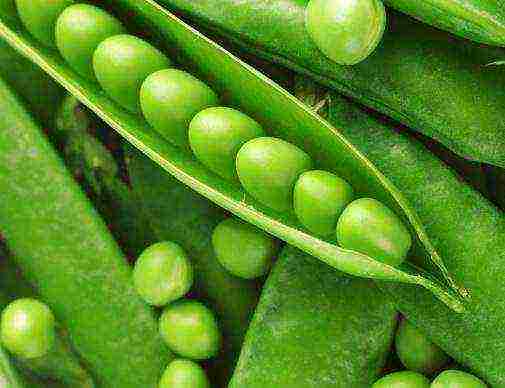
Pea variety Sugar-2
These peas take about two months to ripen. The plant reaches a height of 80 cm. The average length of a bean is 9 cm. The bean contains about a dozen sweet seeds. There is no parchment layer on the valves. The color of the pods is dark green.
Pea varieties for Siberia
The climate in Western Siberia is relatively mild - in summer the temperature is + 15 ... + 35 degrees Celsius. Here you can grow peas such as:
• Maisky-13
• Six weeks
• Altai emerald
• Sugar pod
• Sugar cerebral
• Miracle of Calvidon
• Henry
Description of the variety Altai emerald
The variety belongs to the category of peeling. Ripening period is average. The grains can be eaten fresh, it is permissible to dry and freeze them. They are also good in canned form. The average length of the stem is 48 cm. Slightly curved and rather wide beans have a pointed apex. The yellow-green wrinkled seeds have good taste characteristics. The yield is high.
Pea varieties for the Urals
In the southeast and south of the Urals, summer is quite warm. The following pea varieties are grown here:
• Alpha
• Adagumsky
• Altai emerald
• Berkut
• Vega
• Voronezh green
• Children's sugar
• Early-301
• Sugar small-leaved
• Sprinter
Description of the Sprinter pea variety
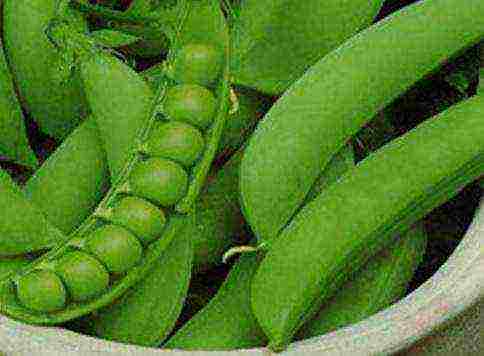
Pea variety Sprinter
This ultra-early ripening variety pleases with high yields. Ripening of beans amicable. Plants are resistant to lodging. The grains have good taste characteristics - they can be preserved or eaten fresh.
The best varieties of peas for the Moscow region and central Russia
Many varieties of peas are suitable for cultivation in temperate continental climates. In the Moscow region, varieties are grown such as:
• Satellite
• Orion
• Valenty
• Phaeton
• Focus
• Innovator
• hazel grouse
• Eureka
• Flora
The best pea varieties for central Russia:
• Excellence
• Excellent-240
• Nemchinovsky-766
• Inexhaustible
• Early-301
• Zhegalova-112
• Afilla
• Competitive
• Torsdag
• Jubilee-1512
• Moskovsky-572
• Vegetable-76
Description of the variety of green peas Zhegalova-112

Pea variety Zhegalova-112
This is a medium-ripening variety. The stem is high - its length can be 180 cm. The slightly curved pod reaches 10-15 cm in length.The seeds are colored green. They are slightly flattened, angular, rather sweet in taste.
Shelling peas: varieties
The inner side of the shells of the shell pea beans have a hard layer - it is called parchment. The seeds contain a lot of starch - various dishes are prepared from them, they are dried, ground into flour, frozen, canned. The following varieties of such peas are best known:
• Dianga
• Kubanets
• Jubilee
• Atlant
• Vegetable
• Faith
• Excellent
• Sunrise
Description of the variety of peas Vegetable-76
This variety belongs to the category of early ones - ripening takes only one and a half months. The yellowish wrinkled grains have an angular shape and delight with a pleasant taste. The height of the stems is average - about 70 cm. The variety is fruitful, suitable for canning.
The best varieties of peas: reviews
It is difficult to name the best pea variety - it all depends on what requirements are imposed on the plant. Each category has its own leaders. Sweet and fruitful varieties are of the greatest interest.
